Upper eyelids
Over time, most people develop extra skin in the top eyelid which can give a tired and sad look. In some people if there is significantly excessive skin, it can cause a blockage in the visual field. These people may notice that they have to tilt their head back to see things or find it hard when backing the car out to see out the back.
Surgery to fix the excess skin and to give a lift to the upper eyelid is safe and a commonly performed procedure. It can be done under local anaesthesia alone, has a usually straight forward recovery process and is called an upper lid blepharoplasty.
An upper lid blepharoplasty procedure under local involves an injection of local anaesthetic, removal of skin, some excess muscle fibres and sometimes underlying fatty tissue. In patients of South-East Asian descent who have ‘puffy’ eyelids, several extra stitches can be used to shape the eyelid and lift the puffiness. Some people have folds of skin across the inside of their eyelid which can be improved at the same time as the eyelid surgery.
Other patients may have a condition known as ‘ptosis’, where the ability to mechanically open the eyelids is stretched meaning the eyelid margin sits too low. A ptosis repair can be performed at the same time as a blepharoplasty but the operation is required to be under intravenous sedation rather than local alone and there are additional complexities which would need to be discussed.
Before & After


The Standard Incision Plan

Lower eyelids
The common issues that individual’s notice about the lower eyelids include the tear trough deformity, bulging and puffiness of the lower eyelid skin, malar bags and sometimes a loose lower eyelid margin.
Lower eyelids are more technically demanding to treat from a surgeon’s perspective and more potential problems can occur in the postoperative period compared to upper eyelid surgery. In people with mild to moderate lower eyelid age related change, the use of non-surgical techniques to improve the appearance may be a better option.
There are different surgical approaches used for the lower eyelid and it is important to tailor that approach to each person.
Brow lift
The goal of brow lifting is to elevate and support the eyebrow. The effect is to open the appearance of the eye area leading to a refreshed and less serious/sad appearing brow. In many patients the brow is sitting at a good level but to maintain that position, the forehead muscles are working hard to elevate the brow. This can lead to tension headaches and wrinkles of the forehead.
There are several different approaches to lifting the brow:
My preferred option is a temporoparietal fascial brow lift ( TPF brow lift). Incisions are made in the hairline of the temples, the brow is mobilised underneath the skin and sutures used to hold the lifted brow.
Endoscopic browlift is designed to reduce the skin incision required but was often underwhelming with it’s results and for that reason I do not often suggest this option for patients.
A Bicoronal hairline incision is used when aiming to lower the hairline, raise the brow and offers the option to reduce the prominence of the frontal sinus. This is useful in gender affirming surgery where the masculine forehead is softened.
A browlift can be combined with other surgeries such as a blepharoplasty or facelift.
The incisions in the scalp are closed with metal staples. The reason for staples rather than stitches is that they are easier to remove from hair bearing scalp than stitches are. Staples are kinder on hair follicles. Staples are removed 7-10 days post op.
Hair can be washed a couple of days after the surgery.
Usual post-operative care
Following your surgery we transfer you to our recovery room and have cool eyepads covering your eyes. We check to make sure there is no untoward swelling. It is important that you have someone drive you home.
We will provide you with eye ointment, extra eye pads and written instructions for you and your support person to follow.
The key aspects of the first 2-3 days after the operation are to apply the eye ointment upt to 4 times a day to the incision lines (or as otherwise directed by us). Keep the cool packs on your eyes for at least 15 mins every hour to help reduce the swelling and bruising. Please avoid watching a television or a computer screen for prolonged periods as this can strain your eyes and slow the recovery process. I recommend listening books, radio and podcasts to help pass the time.
It is normal that over the first couple of days after the surgery that the eyes may look different than expected or patients worry about the final appearance. It is early days at that point and it is important not to look too closely at this time as the eyelids have a lot of recovery to do.
After 72 hours from your surgery, you can start to get back to more normal activities. I recommend around 1-2 weeks off work as the bruising around your eyes can be noticeable and stay away from heavy physical activity like gym work for around 4-6 weeks.
We normally review patients at the clinic within the first week to check on healing. Often dissolving stitches are used that naturally fall out after a few days to a week. We would then routinely check you at 6 weeks after the surgery and if all is ok, then again at 1 year afterwards.
Potential problems that can arise after eyelid surgery and how we can manage those issues.
1. Retrobulbar haematoma
This is a rare but serious complication where there can be bleeding behind the eye. This causes the eyeball to be pushed forward and is a painful condition. It is a critically urgent problem to manage and usually occurs within the first few hours after surgery. Call us urgently or call 111.
2. Bruising
Most people have some bruising that resolves over the first week or so
3. Scar
The incision lines are often red for the first 6-8 weeks after the surgery. You are able to use concealer eyecream once the incision line has healed. This is usually around 2 weeks after the surgery. Over time the scar is usually imperceptible.
4. Asymmetries or differences between the eyes
Everyone has some differences between each side of their face and your eyelids are no different. Usually these differences are not noticeable to anyone else.
I hope you find these guides helpful in preparation for surgery and for your recovery. It will cover general details of surgery and the normal way that individual’s recover after facial surgery.

